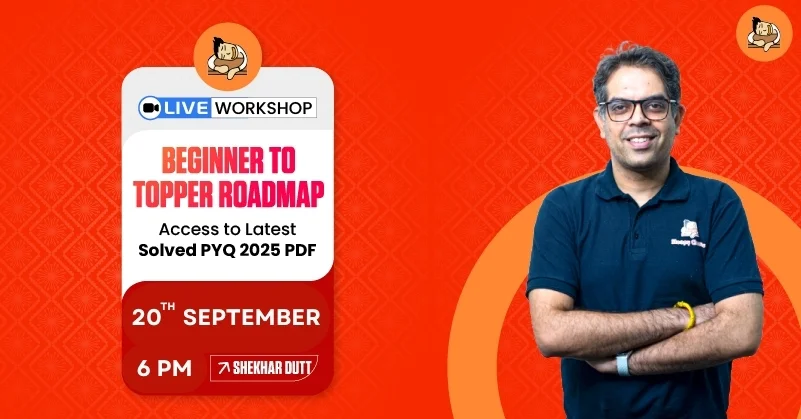Gender-based violence is a serious problem in India, affecting countless women and girls. This article will explore the history, current situation, and impact of gender-based violence in India. It will also look at the challenges in addressing this issue, the support systems available for survivors, and the efforts being made by communities and policymakers. Finally, we’ll discuss innovative solutions and future directions to combat gender-based violence in India.
Key Takeaways
- Gender-based violence in India has deep historical and cultural roots.
- Current statistics show a high prevalence of violence against women.
- Legal, law enforcement, and healthcare systems face significant challenges.
- Support systems like shelters and counseling services are crucial for survivors.
- Community efforts and new policies are key to making lasting changes.
Understanding Gender-Based Violence in India
Historical Context and Cultural Factors
Gender-based violence (GBV) in India has deep roots in history and culture. Traditional norms and patriarchal values have long placed women in subordinate roles. Violence against women is not a new issue; it has evolved over centuries, influenced by various social, economic, and political factors. Cultural practices like dowry, child marriage, and honor killings are some of the historical elements that contribute to GBV.
Current Statistics and Trends
The current landscape of GBV in India is alarming. According to recent data, a significant number of women experience some form of violence in their lifetime. The National Crime Records Bureau (NCRB) reports thousands of cases annually, with many more going unreported. Here’s a snapshot of the statistics:
| Type of Violence | Reported Cases (2022) |
|---|---|
| Domestic Violence | 125,000 |
| Sexual Assault | 33,000 |
| Dowry Deaths | 7,000 |
These numbers highlight the urgent need for effective interventions.
Impact on Women and Society
The impact of GBV extends beyond the individual victims. It affects families, communities, and the broader society. Women who experience violence often suffer from long-term physical and mental health issues. The economic cost is also significant, as survivors may lose their ability to work or require extensive medical care. Moreover, GBV perpetuates gender inequality, hindering social and economic development.
The fight against gender-based violence in India is not just about protecting women; it’s about building a more just and equitable society for all.
Challenges in Addressing Gender-Based Violence
Legal and Judicial Barriers
The legal system in India often fails to protect victims of gender-based violence. Many laws are outdated and do not address the current realities faced by women. Additionally, the judicial process is slow, causing delays in justice. Victims frequently encounter intimidation and harassment during trials, which discourages them from seeking legal help.
Police and Law Enforcement Issues
One shocking example of systemic violence is how gender-based violence cases are often handled by Indian police. About 40% of officers believe that most complaints are exaggerated, leading to a lack of proper investigation. This attitude results in many cases being dismissed or not taken seriously. Moreover, there is a shortage of female officers, making it difficult for women to report crimes comfortably.
Healthcare System Limitations
The healthcare system in India is not equipped to handle the needs of gender-based violence survivors. There is a lack of sufficient shelters, counseling services, and rehabilitation programs. Medical professionals often lack training in dealing with such cases, leading to inadequate care and support for victims.
Addressing these challenges requires a multi-faceted approach, involving legal reforms, better training for law enforcement, and improved healthcare services.
Support Systems for Survivors
The lack of sufficient shelters, counseling services, and rehabilitation programs for survivors of gender-based violence is a critical issue.
Shelters and Safe Houses
Shelters and safe houses provide a temporary refuge for survivors. These places offer a safe environment where individuals can start to rebuild their lives. However, the number of available shelters is far from adequate, leaving many without a safe place to go.
Counseling and Mental Health Services
Counseling and mental health services are essential for helping survivors cope with trauma. The percentage of survivors of gender-based violence seeking health care is far lower than needed. Many survivors do not receive the mental health support they require, which can hinder their recovery.
Rehabilitation Programs
Rehabilitation programs aim to help survivors reintegrate into society. These programs often include job training, education, and other support services. Despite their importance, these programs are not widely available, making it difficult for survivors to regain their independence.
In South Asia, the prevalence of lifetime intimate partner violence is 35% higher than the global average. This highlights the urgent need for effective support systems for survivors.
Community and Grassroots Efforts
Role of NGOs and Civil Society
Non-governmental organizations (NGOs) and civil society groups play a crucial role in combating gender-based violence (GBV) in India. These organizations provide essential services such as legal aid, counseling, and safe shelters for survivors. They also work on raising awareness and advocating for policy changes to better protect women.
Community Education and Awareness
Community education programs are vital in changing societal attitudes towards GBV. These initiatives often include workshops, seminars, and public campaigns aimed at educating people about the importance of gender equality and the harmful effects of GBV. In Nagaland, India, around 2,000 government-run schools will benefit from GBV interventions supported by the World Bank.
Local Success Stories
Local success stories serve as powerful examples of how community efforts can make a difference. In various parts of India, grassroots movements have successfully reduced instances of GBV by empowering women and educating communities. These stories highlight the importance of collective action and the impact it can have on creating safer environments for women.
Policy and Legislative Measures
Existing Laws and Their Effectiveness
India has several laws aimed at combating gender-based violence. The primary legislation addressing domestic violence in India is the Protection of Women from Domestic Violence Act (PWDVA), enacted in 2005. This landmark law provides a framework for protecting women from various forms of abuse. However, its effectiveness is often questioned due to poor implementation and lack of awareness.
Recent Policy Changes
Recent years have seen some policy changes aimed at strengthening protections for women. Amendments to the Criminal Law in 2013, following the Nirbhaya case, introduced stricter penalties for sexual offenses. Despite these changes, challenges remain in ensuring these laws are enforced effectively.
Recommendations for Future Legislation
To better address gender-based violence, future legislation should focus on:
- Improving implementation of existing laws.
- Increasing funding for shelters and support services.
- Enhancing training for police and judicial officers.
- Promoting community-based interventions.
Effective legislation is crucial, but it must be paired with robust implementation and community support to truly make a difference.
International Perspectives and Collaborations
Global Comparisons and Lessons
Gender-based violence is a global issue, but its prevalence varies widely. In South Asia, the rate of lifetime intimate partner violence is 35% higher than the global average. This stark difference highlights the need for tailored solutions. Countries can learn from each other by sharing successful strategies and adapting them to local contexts.
International Aid and Support Programs
International organizations play a crucial role in supporting local efforts to combat gender-based violence. For instance, in Nagaland, India, around 2,000 government-run schools will benefit from gender-based violence interventions via the World Bank-supported program. Such initiatives provide much-needed resources and expertise to areas that lack them.
Collaborative Initiatives
Ending gender-based violence requires collaborative efforts. The IMPRI Impact and Policy Research Institute in New Delhi held a four-week online immersive certificate course on ending gender-based violence. These collaborative initiatives bring together experts, policymakers, and activists to share knowledge and develop comprehensive strategies.
Collaborative efforts are essential for creating lasting change in the fight against gender-based violence.
Innovative Solutions and Future Directions
Technological Interventions
Technological advancements are playing a crucial role in combating gender-based violence in India. Mobile apps and online platforms are being developed to provide immediate help to victims. These tools can connect women to emergency services, legal aid, and counseling. For instance, some apps allow users to send distress signals to pre-selected contacts and local authorities.
Educational Programs and Campaigns
Education is a powerful tool in the fight against gender-based violence. Schools and community centers are implementing programs to teach young people about gender equality and respect. Campaigns are also being launched to raise awareness about the impact of cyberviolence on women. These initiatives aim to change societal attitudes and reduce the stigma associated with reporting violence.
Empowerment and Economic Independence
Empowering women economically is essential for reducing gender-based violence. Programs that provide vocational training and financial literacy can help women gain independence. When women have their own income, they are less likely to stay in abusive relationships. Additionally, community-based projects are being set up to support women entrepreneurs and create safe work environments.
The future of combating gender-based violence in India lies in a combination of technology, education, and economic empowerment. By addressing these areas, we can create a safer and more equitable society for all.
Conclusion
Gender-based violence in India is a serious problem that affects many women and girls. The challenges are many, from lack of support services to societal attitudes that blame victims. However, there are solutions. Education and awareness can change how people think about gender roles. Better laws and stricter enforcement can help protect women. Support services like shelters and counseling can help survivors heal. By working together, we can make India a safer place for everyone.
Frequently Asked Questions
What is gender-based violence?
Gender-based violence refers to harmful acts directed at someone because of their gender. It includes physical, emotional, and sexual abuse.
Why is gender-based violence a big issue in India?
Gender-based violence is a big issue in India due to cultural norms, lack of law enforcement, and insufficient support systems for survivors.
What are some challenges in fighting gender-based violence?
Some challenges include legal barriers, ineffective police work, and limited healthcare services for survivors.
How does gender-based violence affect society?
Gender-based violence harms not just the victims but also affects families and communities, leading to social and economic problems.
What support is available for survivors in India?
Survivors can access shelters, counseling, and rehabilitation programs, though these services are often limited.
What can be done to reduce gender-based violence?
Efforts to reduce gender-based violence include better laws, more support for survivors, community education, and international collaborations.







